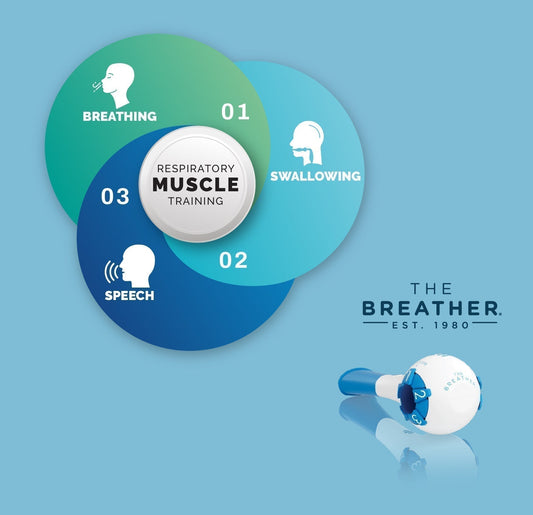COPD is a leading and increasingly prevalent cause of morbidity and mortality and is projected to be the third leading cause of worldwide death by 2035 [1]. People with COPD often present with comorbidities that need to be considered in the severity scale of their COPD diagnosis.
Furthermore, treatment approaches should consider comorbidities and aim for holistic, multidisciplinary therapy. This article takes a look at the management of comorbidities in COPD.
If you or a family member is living with COPD and related health issues, speak to your clinician today about a multidisciplinary care approach
What are the comorbidity conditions in COPD?
Most people with COPD have additional chronic illnesses, known as comorbidities, which often significantly impact health-related quality of life (QoL) in the early stages of COPD as well as mortality in the late stages of the disease. They significantly increase the burden of COPD management with regard to healthcare costs and cause therapeutic dilemmas for healthcare providers.


Most commonly, COPD is associated with the following:
-
Cancers (Especially Lung Cancer)
-
Asthma
-
Obstructive Sleep Apnea (OSA)
-
Hypertension (high blood pressure)
-
Cardiovascular Disease
-
Diabetes
-
Metabolic Syndrome
-
Dysfunctional Skeletal Myopathies
-
Osteoporosis
-
Mental Disorders
The lack of information on how to effectively treat COPD and associated diseases is due to the common exclusion of COPD patients with multiple chronic diseases from clinical trials. Now, let's take a more detailed look at the most common and most important comorbidities that are prevalent in COPD patients.
What are the pulmonary comorbidities in COPD?
Some comorbid disorders predominantly related to the lung itself frequently co-exist alongside COPD.
Asthma
Some people suffer from asthma alongside their COPD, a condition that may be defined as ACOS (Asthma-COPD Overlap Syndrome). This combination typically involves:
-
More severe symptoms
-
Higher health care utilization
-
Rapid disease progression
ACOS can be very hard to distinguish from either COPD or asthma alone. Still, recent guidelines from the American Lung Association provide a stepwise approach for differential diagnosis of COPD, asthma, and ACOS.
ACOS is especially common in elderly patients and causes more frequent and severe exacerbations and a reduced QOL when compared to patients with COPD only [2]. Clear treatment guidelines for combination therapy are lacking; however, standard treatment approaches include inhalers, antibiotics, and anti-inflammatory drugs [3].


Lung cancer
COPD patients have an increased risk of developing lung cancer when compared to the general population [4], and more than 50% of all lung cancer patients have moderate to severe COPD [5]. COPD might prevent lung cancer patients from qualifying for surgery due to impaired lung function.
This results in a worse prognosis for patients who have both and leads to reduced survival rates. Lung cancer is, together with cardiovascular diseases, the most common cause of death in COPD patients with mild-to-moderate disease [6].
Pulmonary fibrosis
Some patients with COPD also suffer from Pulmonary fibrosis, adding additional stress to their respiratory function. Patients with pulmonary fibrosis and COPD have characteristic lung function tests with normal spirometry values but severely reduced gas exchange.
Those patients are at higher risk of developing pulmonary hypertension and have a worse prognosis than patients with either pulmonary fibrosis or COPD alone [7].
What are the cardiovascular comorbidities in COPD?
Comorbidity related to heart and circulatory disorders is exceptionally frequent in people with COPD. Such disorders also contribute to poor health outcomes and increased healthcare utilization.
Prevalence of cardiovascular comorbidities in COPD patients
| Cardiovascular Comorbidities | Prevalence in COPD Patients |
|---|---|
| Hypertension (high blood pressure) | 59% |
| Heart Failure | 7%-42% |
| Coronary artery disease | 24% |
| Atrial fibrillation | 23%-62% |
| Pulmonary artery pressure abnormalities (PAH) | up to 62% |
| Venous thromboembolism (VTE) | up to 25% |
| Stroke | 8% |
Hypertension
Hypertension (high blood pressure) is more common in patients with COPD and leads to more severe dyspnea and airway obstruction, as well as reduced exercise capacity. The prevalence of hypertension in COPD patients has been estimated at up to 59%. [8]
Congestive heart failure
The co-presence of COPD and congestive heart failure (CHF) is common, as the underlying causes are connected, and about 7% to 42% of those with stable COPD also have CHF. [9] CHF is associated with worse prognoses and is one of the most common causes of death among COPD patients, while COPD, in turn, is considered an independent risk factor in people with CHF.
In addition, the coexistence of these diseases can impact both left and right ventricular function, the latter of which is often overlooked. [10]
Coronary heart disease
The prevalence of coronary heart disease has been estimated to be about 24% in COPD patients. [11] This is clinically meaningful as coronary heart disease leads to worse prognoses and requires specific management.
Atrial fibrillation
The prevalence of atrial fibrillation ranges from 23% to 62% in COPD patients [12][13], and 18% of patients with atrial fibrillation have COPD [14]. The presence of COPD increases the hospitalization mortality rate in patients with arrhythmia from 8% in patients without COPD to 31% [15].
Pulmonary artery hypertension
Pulmonary artery hypertension (PHT) occurs in up to 62% of COPD patients and is caused by the remodeling of the arteries in the lungs due to COPD-mediated destructive events.[16]
PHT leads to more severe dyspnea, exercise limitation, greater desaturation during exercise, and higher mortality. PHT is often associated with right ventricular dysfunction and heart failure, which might go undiagnosed.


Venous thromboembolism
The prevalence of venous thromboembolism lies around 25% during an exacerbation of COPD and is associated with increased length of hospital stay and 1-year mortality [17]. If left untreated, the presence of venous thromboembolism during COPD exacerbations increases the risk of death by 25% [18].
Underlying reasons for the frequent coexistence of venous thromboembolism and COPD include common pathophysiology, such as systemic inflammation and endothelial and pulmonary dysfunction.
Stroke
COPD patients are at higher risk of stroke due to common associated risk factors such as smoking and age, as well as due to COPD-mediated systemic inflammation and coagulopathy. A large meta-analysis including 865,521 COPD patients found a pooled stroke incidence of 8% in COPD.[19]
What are the metabolic comorbidities in COPD?
Metabolic disorders frequently coexist with COPD and contribute to its complexity, progression, and poor health outcomes. These conditions create additional health burdens, making disease management more challenging and requiring a comprehensive, multidisciplinary approach.
Diabetes and metabolic syndrome
COPD patients are at increased risk of developing diabetes, as around 30% of COPD patients have diabetes [11]. The high rate of co-development is based on common risk factors such as smoking but also interacting factors in the common underlying systemic inflammation.
Diabetes worsens the prognosis in COPD patients by reducing exercise capacity, increasing hospitalization risk, and increasing the risk of mortality during exacerbation. [20]


Osteoporosis
The prevalence of osteoporosis reaches up to 48% in COPD patients [21], caused by common risk factors such as age, weakness, and vitamin D deficiency, but also due to COPD-mediated effects from systemic inflammation and reduced exercise capacity [22].
Osteoporosis-caused vertebral fractures, in turn, can impair lung mechanisms and accelerate lung function decline.
Cachexia and myopathy
Loss of fat-free mass (cachexia) and skeletal muscle dysfunction (myopathy) also occur in COPD patients. The presence of COPD supports their development due to systemic inflammation, physical inactivity, and oxidative stress.
Skeletal muscle weakness, in turn, leads to reduced exercise capacity, activity, and strength and is associated with reduced QOL, and increased risk of hospitalization, exacerbations, health care utilization, and death. [23] The development of skeletal weakness early in the disease might indicate a more aggressive form of COPD.
What are the mental comorbidities in COPD?
COPD doesn't just affect the lungs; it also impacts the mind. Anxiety, depression, and related mental health disorders are familiar companions to this disease and can undermine both quality of life and treatment adherence, further fueling a vicious circle of deterioration. This may be due to reduced independence, social isolation, or worries related to their health.
Anxiety
Anxiety affects about 21% of COPD patients [24] and is associated with a worse perception of dyspnea and higher rates of mortality and readmission after exacerbations [25]. Anxiety represents one of the most deadly comorbidities, especially among female COPD patients [26].
Depression
Depression has been reported by up to 30% of COPD patients [24] and is associated with reduced activity, QOL, and adherence to treatment, as well as with increased risk of exacerbations and mortality [25].


Other significant comorbidities in COPD
Obstructive sleep apnea syndrome (OSA) is higher in COPD patients than in the general population. However, given the high prevalence of both diseases in the population, OSA affects around 42% to 66% of COPD patients [27] [28] [29] [30] [31].
The presence of OSA leads to increased risk of exacerbations and death and the development of cardiovascular diseases, including right heart failure and PHT.
Gastroesophageal reflux disease
Gastroesophageal reflux disease (GERD) is common in asthma but also affects COPD patients, as large population-based data showed COPD patients had a significantly higher incidence of GERD (28%) compared to non-COPD individuals (14%). [32] It is associated with decreased QOL and increased risk of exacerbations.
Chronic renal failure
Renal insufficiency affects about 22% of COPD patients, and they have a twofold higher risk of acute renal failure and a threefold higher risk of chronic renal failure than age-matched people [33]. Especially in elderly COPD patients, around 25% of chronic renal failure cases might remain undiagnosed [34].
Renal complications especially affect COPD patients with hypoxemia and hypercapnea and are caused by increased rigidity of the arteries and endothelial dysfunction in COPD patients. Renal dysfunction, in turn, correlates with increased airway obstruction and inflammation.
Now that we understand the most common and important comorbidities in COPD patients, let's examine the relationships between COPD and comorbidities to better comprehend how these comorbidities influence initial diagnosis and overall treatment.
How do these comorbidities link with COPD?
Recent advances in understanding the mechanisms behind COPD enable us to identify which comorbidities are directly related to the disease (COPD-dependent) and which are independent but frequently co-existing.
The current view is that systemic inflammation stemming from COPD plays a key role in the development of related health issues, such as cancer, cardiovascular disease, and diabetes, by disturbing normal signaling mechanisms. Inflammatory mediators, including interferons, interleukins, C-reactive protein, fibrinogen, and amyloid, can travel through the bloodstream and contribute to disease progression in other organs.
This process can work in both directions. Inflammation originating from other conditions may further exacerbate COPD, for instance, heart failure or coronary artery disease.
Additionally, medications used to manage COPD may contribute to the progression of comorbidity. Bronchodilators can sometimes cause arrhythmias and tremors, while inhaled anticholinergics may affect cardiovascular function.
Systemic corticosteroids, frequently overprescribed in patients with severe disease, can contribute to complications such as hypertension, renal insufficiency, diabetes, osteoporosis, and muscle dysfunction. This complex interaction can make it challenging for clinicians to distinguish cause from effect, adding a layer of difficulty in patient care.
What is the growing economic burden of COPD on healthcare systems?
As the prevalence of COPD is increasing in developed countries, associated healthcare costs are expected to rise. The American Lung Association states that the US overall medical cost of COPD in adults 45 years or older is approximately $24 billion/year that, including prescription drugs costs ($11.9 billion), inpatient costs ($6.3 billion), office-based costs ($2.4 billion), home health cost ($1.6 billion), emergency rooms cost ($0.9 billion), and outpatients costs ($0.8 billion).


The total costs of COPD are directly correlated with comorbidities, as these increase hospitalization rates and costs. Exacerbations are the leading cause of hospitalizations, accounting for 40-70% of total costs. Despite higher hospitalization costs, COPD patients with comorbidities also use about 50% more cardiovascular agents and twice as many analgesics, antibiotics, and psychotherapeutic medications.
On average, the healthcare costs of a COPD patient with comorbidities are 4.7% higher than those of a COPD patient without comorbidities. Compared with non-COPD patients, COPD patients consume 3.4 times more healthcare resources.
What would be the treatment and management of COPD and Comorbidities?
Effective treatment for COPD with comorbidity requires a holistic, multidisciplinary approach, following current guidelines while tailoring interventions to each patient's unique condition.
Personalized, guideline-based treatments
Evidence-based guidelines should inform all treatment decisions, with close attention to new findings and updated recommendations related to comorbidities.
Long-acting β2-agonists, oral corticosteroids, and theophylline may pose additional risks for patients with cardiovascular disorders; tiotropium appears to be a protective and well-tolerated option. Close monitoring and patient-specific treatment plans are crucial for achieving optimal outcomes.
Disease-specific approaches
For patients with ACOS, treatment should be tailored to their dominant symptoms:
Predominant asthma symptoms: Consider bifunctional drugs and inhaled corticosteroids, but avoid adding long-acting bronchodilators.
Predominant COPD symptoms: Bronchodilators are recommended, while inhaled corticosteroids may be less appropriate.
Such tailored care underscores the complexity of treatment regimens and the importance of accurate diagnosis.


Cardiovascular disease and OSA management
Cardiovascular treatment for patients with COPD and comorbidity is frequently sub-optimal, even though guidelines strongly support the use of beta-blockers, statins, and ACE inhibitors.
Managing obstructive sleep apnea (OSA) in these patients should follow standard OSA guidelines, with a strong emphasis on oxygen therapy, weight loss, and CPAP.
Non-pharmacological treatments
Non-drug interventions can make a significant, measurable difference in patient outcomes. Key strategies include:
-
Smoking cessation is a top priority for slowing disease progression
-
Influenza and pneumococcal vaccinations to reduce complications
-
Pulmonary rehabilitation offers an opportunity to enhance exercise capacity, improve health-related quality of life, and reduce hospitalizations.
This multidisciplinary intervention can aid in self-management, behavioral change, and psychological support, delivering a more holistic approach to care.
How is THE BREATHER effective for COPD and its comorbidities?
As part of a truly comprehensive and patient-centered approach to COPD management, THE BREATHER offers unique, non-pharmacological support in multiple dimensions of care. By strengthening respiratory muscles, it improves dyspnea, ventilatory capacity, and overall physical function, critical factors not only for COPD, but for a range of interconnected comorbidities.


In patients with asthma or ACOS, it can help reduce the symptom burden. By reducing pulmonary strain, it supports better cardiovascular health, aiding in the management of hypertension, congestive heart failure, and coronary artery disease (CAD). Its role in improving oxygenation and reducing fatigue may benefit those at risk of stroke or with a history of cerebrovascular disease.
Structured breathing training also plays a role in managing sleep disturbances, particularly in conditions like obstructive sleep apnea (OSA), where breathing rhythm and upper airway tone are impaired. For individuals with GERD, improved diaphragmatic function may help reduce intra-abdominal pressure and the frequency of reflux episodes.
Additionally, THE BREATHER may contribute to better outcomes in diabetes through increased physical activity. Its calming, controlled breathing techniques have also shown promise in alleviating anxiety and depression, making it a valuable tool in addressing both physical and psychological aspects of COPD.
Final thoughts
Managing COPD requires more than addressing respiratory symptoms alone, as comorbidities significantly impact disease burden, hospitalization risk, and overall quality of life. A truly effective care model must be holistic, patient-centered, and multidisciplinary, treating the person as a whole, rather than focusing solely on the lungs.
Altogether, THE BREATHER stands as a scalable, multidimensional solution within a holistic COPD treatment strategy, bridging the gap between respiratory therapy and full-body wellness.
References
[2]. Fifteen-year mortality of patients with asthma-COPD overlap syndrome
[5]. COPD prevalence is increased in lung cancer, independent of age, sex and smoking history
[6]. Mortality in COPD: Causes, risk factors, and prevention
[7]. Chronic Obstructive Pulmonary Disease Combined with Interstitial Lung Disease
[9]. Cardiovascular Diseases in COPD: From Diagnosis and Prevalence to Therapy
[10]. Heart failure and chronic obstructive pulmonary disease: diagnostic pitfalls and epidemiology
[15]. Epidemiology of atrial fibrillation: European perspective
[18]. Pulmonary embolism in chronic obstructive pulmonary disease: a population-based cohort study
[22]. COPD and osteoporosis: links, risks, and treatment challenges
[23]. Cachexia in chronic obstructive pulmonary disease: new insights and therapeutic perspective
[25]. Anxiety and depression-Important psychological comorbidities of COPD
[26]. Anxiety and depression in COPD patients: The roles of gender and disease severity
[27]. Prevalence of obstructive sleep apnea among patients with chronic obstructive pulmonary disease
[29]. Prevalence of obstructive sleep apnea in patients with chronic obstructive pulmonary disease
[31]. Frequency of Obstructive Sleep Apnea in Patients of Chronic Obstructive Pulmonary Disease









